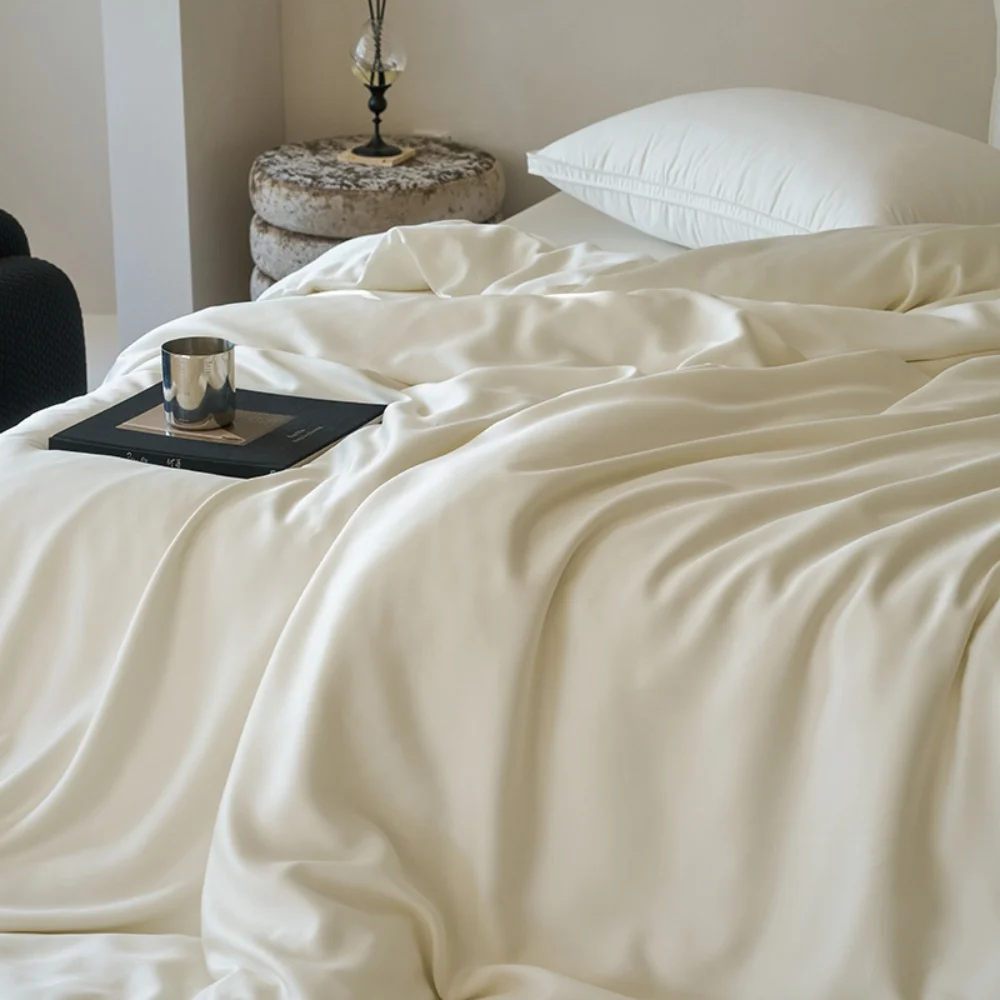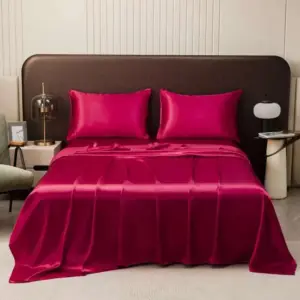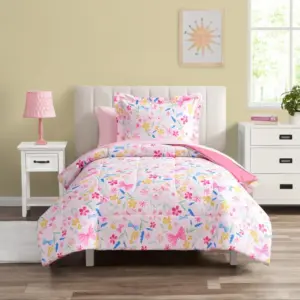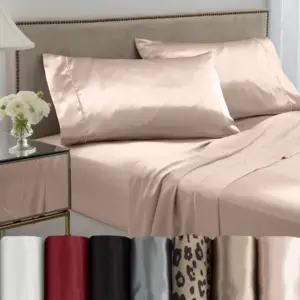Have you ever walked into a bedroom and felt instantly calm, energized, or cozy? The colors we choose for our bedding play a powerful role in creating these feelings. Whether you’re redesigning your entire bedroom or simply refreshing your bedding, understanding how to combine colors can transform your sleep space from ordinary to extraordinary.
Understanding Color Theory for Bedding Design
Color isn’t just about aesthetics—it’s a powerful tool that affects our mood, perception, and even our sleep quality. When it comes to creating the perfect bedroom sanctuary, understanding a few basic color principles can make all the difference.
At its core, color theory for bedding follows the same principles as other design fields but with a special focus on creating a harmonious sleep environment. The traditional color wheel serves as our foundation, organizing colors in a way that helps us understand how they relate to each other. This knowledge empowers you to create bedding combinations that feel intentional rather than random.
Colors generally fall into two temperature categories:
- Warm colors (reds, oranges, yellows) – These energize a space and create feelings of warmth and intimacy
- Cool colors (blues, greens, purples) – These promote relaxation, calmness, and a sense of spaciousness
The emotional impact of your bedding colors directly influences your bedroom’s atmosphere. Bright, vivid colors energize, while soft, muted tones soothe. Understanding these effects helps you align your bedding choices with your desired bedroom mood.
The quality of your bedding material also significantly impacts how colors appear. Premium materials like Mulberry silk sheets reflect light differently than synthetic fabrics, giving colors richer depth and dimension. When you explore different silk bedding color options, you’ll notice how the material’s natural luster enhances every hue.
Essential Color Schemes for Beautiful Bedding
Now that we understand the basics, let’s explore the four fundamental color schemes that create the most beautiful bedding combinations.
Monochromatic Schemes use varying shades of a single color. This approach creates a sophisticated, cohesive look that’s nearly impossible to get wrong. Examples include:
* All-white bedding with varying textures and subtle patterns
* Different shades of blue ranging from pale sky to deep navy
* Various tones of gray from light silver to charcoal
Analogous Schemes use colors that sit next to each other on the color wheel, creating harmonious combinations that flow naturally. Some beautiful bedding examples include:
* Soft green, teal, and blue for a serene, water-inspired palette
* Warm burgundy, crimson, and blush pink for romantic elegance
* Golden yellow, soft orange, and warm tan for a sunlit effect
Complementary Schemes pair colors opposite each other on the color wheel, creating vibrant contrasts. For bedding, it’s often best to use complementary colors in a ratio where one dominates:
* Navy blue with coral accents
* Forest green with subtle burgundy touches
* Deep purple with golden yellow details
Triadic Schemes use three colors equally spaced around the color wheel. For bedding, using muted versions of these colors creates interest without overwhelm:
* Soft versions of red, yellow, and blue
* Muted purple, green, and orange
* Blush pink, sage green, and light blue
The material quality of your bedding significantly affects how these color schemes translate in real life. Complete guides to Mulberry silk bed sheets often highlight how the natural sheen of silk enhances color perception, making these color schemes appear even more luxurious.
Timeless Neutral Bedding Combinations
Neutrals form the backbone of timeless, sophisticated bedding design. Far from boring, these versatile colors create peaceful sanctuaries that adapt to changing design trends.
The most enduring neutral bedding combinations include:
- Crisp white bedding with textural interest through different weaves, subtle embroidery, or delicate patterns
- Layered grays from light silver to deep charcoal, creating depth and dimension
- Cream and beige combinations with varied textures for subtle sophistication
- Classic navy and white/cream for traditional elegance
- Subtle metallic accents (silver, gold, copper) against neutral backgrounds
Neutrals excel at creating a sense of calm while providing a flexible foundation for seasonal accessories. Their psychological benefits include promoting relaxation and creating visual space—particularly valuable in smaller bedrooms.
To prevent neutral bedding from appearing flat, incorporate textural variety through different fabrics, weaves, and finishes. Premium materials like grey silk sheets naturally reflect light differently across their surface, adding depth to even the most minimal color palette.
Neutral bedding also offers exceptional versatility—you can easily update your bedroom’s look with different accent pillows, throws, or artwork without replacing your core bedding investment.
Soft & Calming Bedroom Color Palettes
For those seeking a truly restful sleep environment, soft and calming color palettes offer both aesthetic beauty and practical benefits for sleep quality.
These gentle combinations create tranquil bedroom retreats:
- Soft blush pink paired with light gray or cream creates romantic sophistication without being overly feminine
- Sage green with ivory or taupe offers an organic, nature-inspired serenity
- Pale blue with soft white delivers a cloud-like, airy atmosphere
- Lavender with light gray produces subtle elegance with a hint of color
Color psychology research confirms these choices: blues reduce blood pressure and heart rate, greens connect us with nature and reduce stress, and soft purples promote tranquility. These colors work particularly well in bedrooms that receive harsh morning light or for light-sensitive sleepers.
When working with soft palettes, consider adding minimal contrast through slightly deeper tones of the same color family to prevent the bedding from appearing washed out. White silk sheets provide an excellent foundation for these gentle color schemes, offering subtle luminosity that enhances the calming effect.
For the most soothing environment, maintain consistent color temperature within your scheme—either all cool tones or all warm tones—rather than mixing temperatures, which can create visual tension.
Rich & Dramatic Bedding Color Combinations
For those who prefer bold expression in their bedroom, rich and dramatic color combinations create statement-making sanctuaries that reflect confidence and personality.
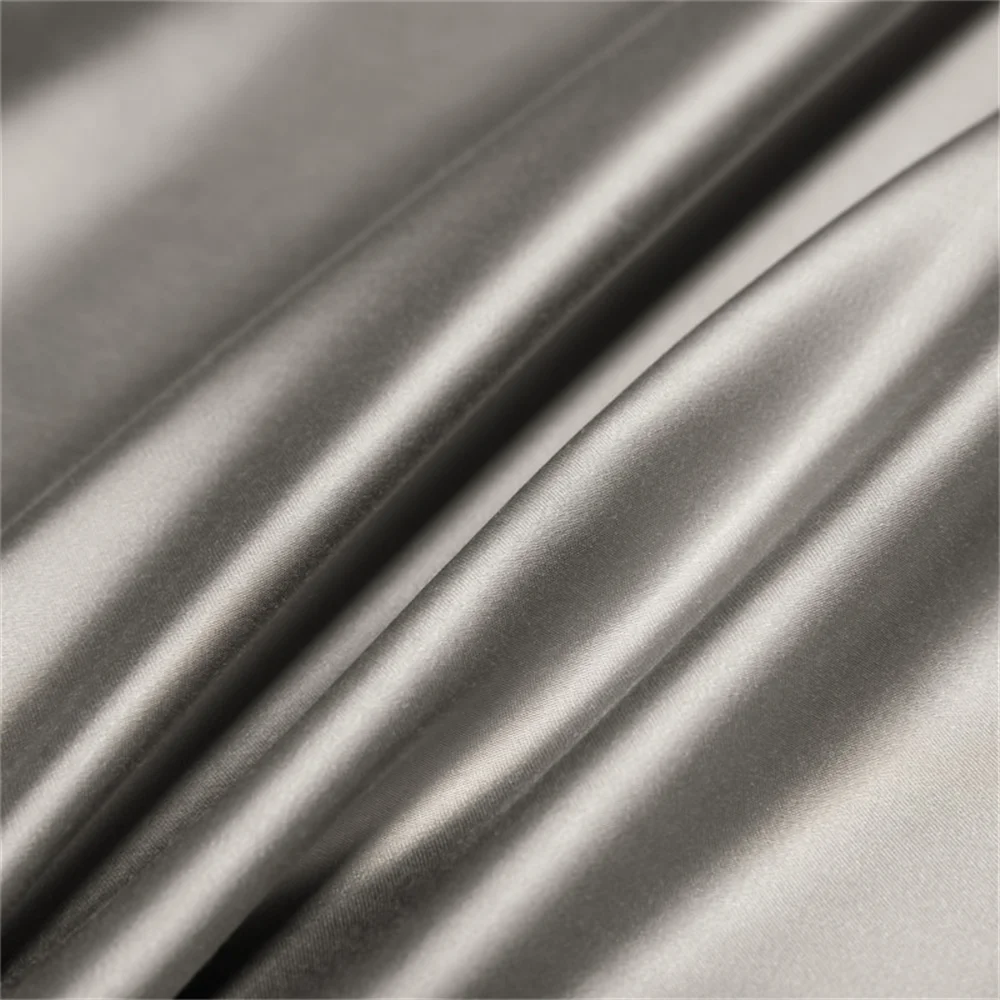
These sophisticated color combinations create striking bedroom focal points:
- Deep emerald green with gold accents for luxurious elegance
- Charcoal gray with deep burgundy for sophisticated coziness
- Navy blue with copper or rust accents for rich contrast
- Forest green and cognac brown for an earthy, grounded feeling
When working with dramatic colors, balance is key. Consider limiting bold colors to larger items like duvet covers, using more neutral sheets and pillowcases to prevent visual overwhelm. Alternatively, use dramatic colors as accents against a neutral background.
Lighting significantly impacts how dramatic colors appear—test swatches in your bedroom’s actual lighting conditions before committing. These colors often appear differently throughout the day as natural light changes.
Premium bedding materials enhance these rich colors—Mulberry silk sheets display exceptional color saturation due to their natural structure, which reflects light differently than cotton or synthetic materials. This quality makes silk particularly well-suited for showcasing deep, dramatic hues.
Nature-Inspired Bedding Color Schemes
Nature provides perfect color harmony inspiration for beautiful bedding combinations. These organic palettes connect us with the outdoor world, promoting wellbeing through biophilic design principles—our innate connection to nature.
Consider these nature-derived color schemes for your bedroom:
- Ocean-inspired blues and greens with sandy neutrals evoke peaceful coastal retreats
- Forest-derived greens, browns, and amber accents create woodland coziness
- Desert landscape schemes with terracotta, sand, and sage offer sun-baked tranquility
- Mountain-inspired combinations of slate blue, granite gray, and pine green bring majestic serenity
Research shows nature-inspired colors reduce stress and improve sleep quality. These color schemes work particularly well in urban environments where natural connections may be limited.
To implement these schemes effectively, consider your bedroom’s natural light—north-facing rooms benefit from warmer nature tones while south-facing rooms handle cooler palettes beautifully. Green silk sheets provide a luxurious foundation for nature-inspired bedrooms, capturing the organic essence while delivering premium comfort.
For added authenticity, incorporate textures that reference natural elements—like wood-toned accents or stone-inspired colors—to enhance the biophilic connection.
How to Consider Your Room When Choosing Bedding Colors
Your bedroom’s existing elements significantly influence how bedding colors will appear. Consider these factors when selecting your perfect palette:
Room orientation and light exposure: North-facing rooms receive cooler light that enhances blue undertones, making warm bedding colors especially welcoming. South-facing rooms bathe in warm light that complements cooler bedding tones.
Room dimensions: In smaller bedrooms, lighter bedding colors create a sense of spaciousness, while larger rooms can accommodate darker, more dramatic bedding colors without feeling confined.
Existing elements: Pull colors from permanent features like wall paint, flooring, artwork, or rugs to create cohesive connections throughout your space.
Seasonal considerations: Consider having seasonal bedding options—lighter, cooler colors for summer and deeper, warmer tones for winter can enhance sleep comfort. Cooling silk sheets work exceptionally well with lighter summer palettes while providing temperature-regulating benefits.
Architectural style: Traditional homes often suit classic color combinations (navy/white, burgundy/cream), while contemporary spaces may embrace more adventurous pairings.
When testing potential colors, observe them at different times of day to understand how changing light affects their appearance. What looks perfect in morning light might seem entirely different in evening lamp light.
Mixing Patterns & Textures in Bedding
Mastering pattern and texture combinations adds visual interest to your bedding ensemble while maintaining color harmony.
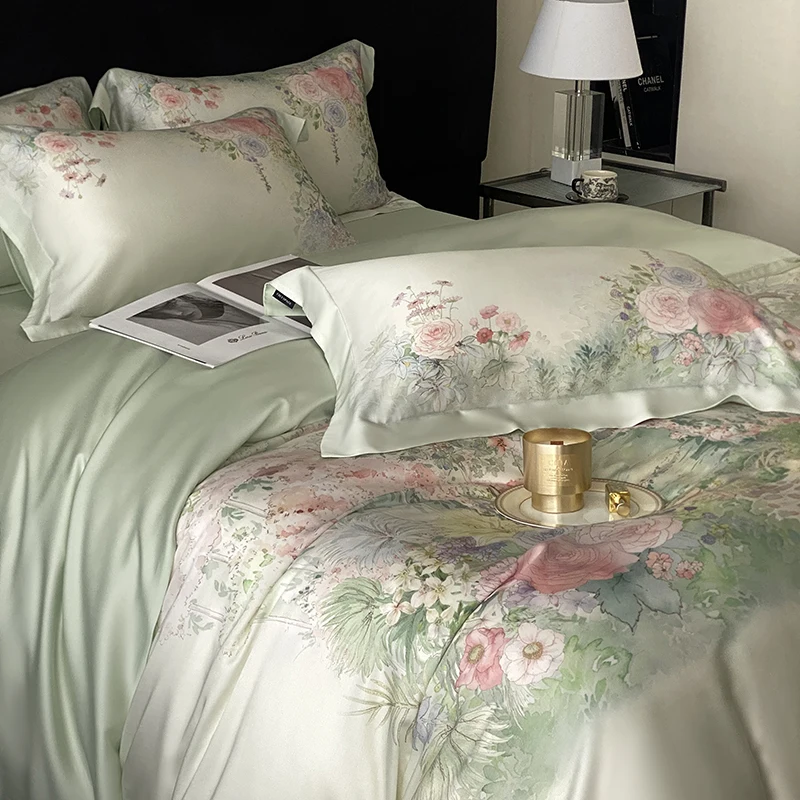
Follow these guidelines for successful pattern mixing:
Apply the rule of three: Combine patterns in different scales—one large (like a bold floral), one medium (like a medium stripe), and one small (like a tiny geometric print).
Maintain a unifying color: Ensure each pattern contains at least one common color to create cohesion.
Balance pattern with solid colors: Prevent visual chaos by including solid-colored elements that give the eye resting places.
Consider pattern directionality: Mix directional patterns (stripes, geometric) with non-directional patterns (florals, abstract designs) for pleasing contrast.
Texture creates dimension in solid-colored bedding through:
- Contrasting materials (smooth silk with nubby linen)
- Varied weaves (sateen, percale, jacquard)
- Decorative elements (pintucks, embroidery, subtle patterns)
The material quality directly impacts how patterns and textures appear. Transform sleep quality with premium materials that hold pattern definition better and offer naturally interesting textures.
For beginners, start with a patterned duvet cover, solid sheets, and one additional patterned element (like decorative pillows) in complementary colors before attempting more complex combinations.
The Power of Accent Colors in Bedding
Strategic accent colors transform basic bedding combinations into personalized, designer-worthy arrangements without requiring a complete bedroom makeover.
Follow the 60-30-10 rule for balanced color distribution:
* 60% primary color (main sheets and duvet)
* 30% secondary color (some pillowcases, bed skirt)
* 10% accent color (decorative pillows, throws, minimal accessories)
Accent colors work particularly well when they:
* Pull from existing room elements like artwork or rugs
* Create intentional contrast with your base scheme
* Reflect seasonal changes or holiday themes
Some unexpected but effective accent color combinations include:
* Mustard yellow accents with gray bedding
* Teal accents with neutral taupe bedding
* Coral accents with navy bedding
* Emerald green accents with blush pink bedding
Premium materials like silk enhance accent colors due to their natural luminosity—the same accent color appears more vibrant and dimensional on silk than on matte cotton. For guidance on selecting the perfect hues, exploring the best colors for silk bed sheets provides valuable insights into how material quality affects color perception.
Accent colors offer low-risk opportunities to experiment with color trends without committing to larger investments in trending colors that may quickly become outdated.
Creating a Personalized Bedding Color Story
Beyond following design rules, the most satisfying bedding color schemes reflect your personal preferences and create meaningful connections.
To develop your personalized bedding color story:
- Consider colors that evoke positive memories or feelings
- Look to favorite clothing items for color preferences you already enjoy wearing
- Take inspiration from meaningful places (a favorite vacation destination, childhood home)
- Start with a cherished item (artwork, decorative object) and build around its colors
The quality of your bedding materials significantly impacts how your chosen colors appear. Luxury silk bedding sets showcase colors with exceptional depth and luminosity that cotton or synthetic materials simply cannot match.
Full-size Silk Sheets, King Size Silk Sheets, Queen Size Silk Sheets, Twin Size Silk Sheets, Washable Silk Sheets
Price range: $95.95 through $178.37 Select options This product has multiple variants. The options may be chosen on the product page100% Silk Sheets, Green Silk Sheets, King Size Silk Bedding Set, Mulberry Silk Bedding Sets, Queen Size Silk Bedding Set
Price range: $1,246.21 through $1,615.22 Select options This product has multiple variants. The options may be chosen on the product pagePink Silk Sheets, Twin Size Silk Sheets
$171.80 Select options This product has multiple variants. The options may be chosen on the product pageFull-size Silk Sheets, Pink Silk Sheets
$136.31 Select options This product has multiple variants. The options may be chosen on the product pageGrey Silk Sheets, Silk Sheet and Pillowcase Set
Price range: $88.20 through $146.64 Select options This product has multiple variants. The options may be chosen on the product pageBamboo Silk Sheets, Cooling Silk Sheets
Price range: $130.76 through $177.80 Select options This product has multiple variants. The options may be chosen on the product page
Remember that your bedroom should ultimately reflect your personal taste rather than rigidly adhering to design trends. The most successful color stories create environments where you feel authentically comfortable and at peace.
How Your Bedding Colors Affect Sleep Quality
The colors surrounding you during sleep do more than please the eye—they can actively influence your sleep quality and overall wellbeing.
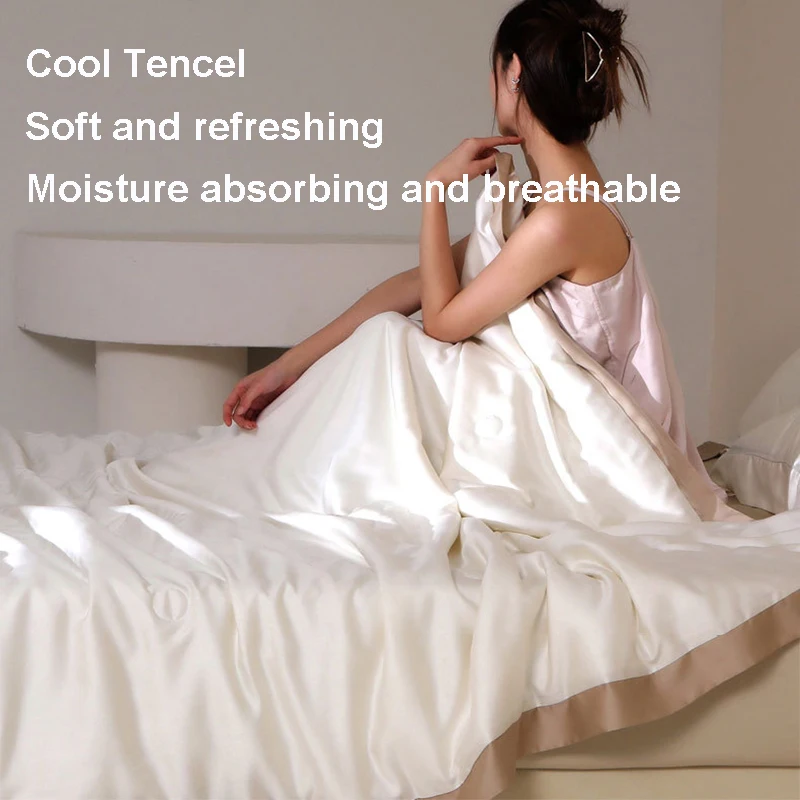
Research reveals fascinating connections between bedding colors and sleep:
- Blue tones are associated with longer sleep duration and more restful sleep cycles
- Purple and brown bedding correlate with shorter average sleep times
- Green creates a bridge between warm and cool colors, promoting balance
- Overly stimulating colors like bright red or orange may delay sleep onset
The science behind these effects involves how colors influence our nervous system and hormone production. Calming colors can lower heart rate and blood pressure, while stimulating colors activate the brain.
Beyond color, the material touching your skin plays an equally important role. Mulberry silk bedding combines optimal color choices with temperature-regulating properties to further enhance sleep quality.
For the best sleep results:
* Choose predominantly cool or neutral colors for your primary bedding
* Reserve bright, energizing colors for daytime spaces or minimal accents
* Consider how colors appear in nighttime lighting when making selections
* Remember that personal associations with colors may override general guidelines
Advanced Color Combination Tips for Luxury Bedding
For those ready to elevate their bedding ensembles beyond the basics, these sophisticated strategies create truly exceptional bedroom environments.
Master these advanced techniques for luxury bedding:
Explore color temperature variations: Instead of pure white, investigate the subtle world of whites ranging from cool blue-whites to warm cream-whites for sophisticated depth.
Implement subtle color-blocking: Divide your bedding visually using closely related hues—for example, a slate blue duvet with steel blue sheets and navy accents.
Play with sheen variations: Mix matte and lustrous finishes of the same color for textural interest without changing the color scheme.
Layer tonal variations: Arrange slightly different shades of the same color family (pale gray, silver, charcoal) for dimensional sophistication.
Use colorful borders and trims: Select bedding with contrasting piping or borders that create definition without overwhelming the primary color.
Premium materials reveal these subtle color nuances more effectively than budget fabrics. Silk sheets showcase color variations with exceptional clarity due to their natural structure and light-reflecting properties.
For truly luxurious results, maintain consistency in bedding quality across all elements—mixing premium and budget items often creates a disjointed appearance regardless of how well the colors coordinate.
What Colors Go Best with Silk Bedding?
Silk’s natural luminosity and light-reflecting properties make it uniquely suited to showcase certain colors with extraordinary beauty.
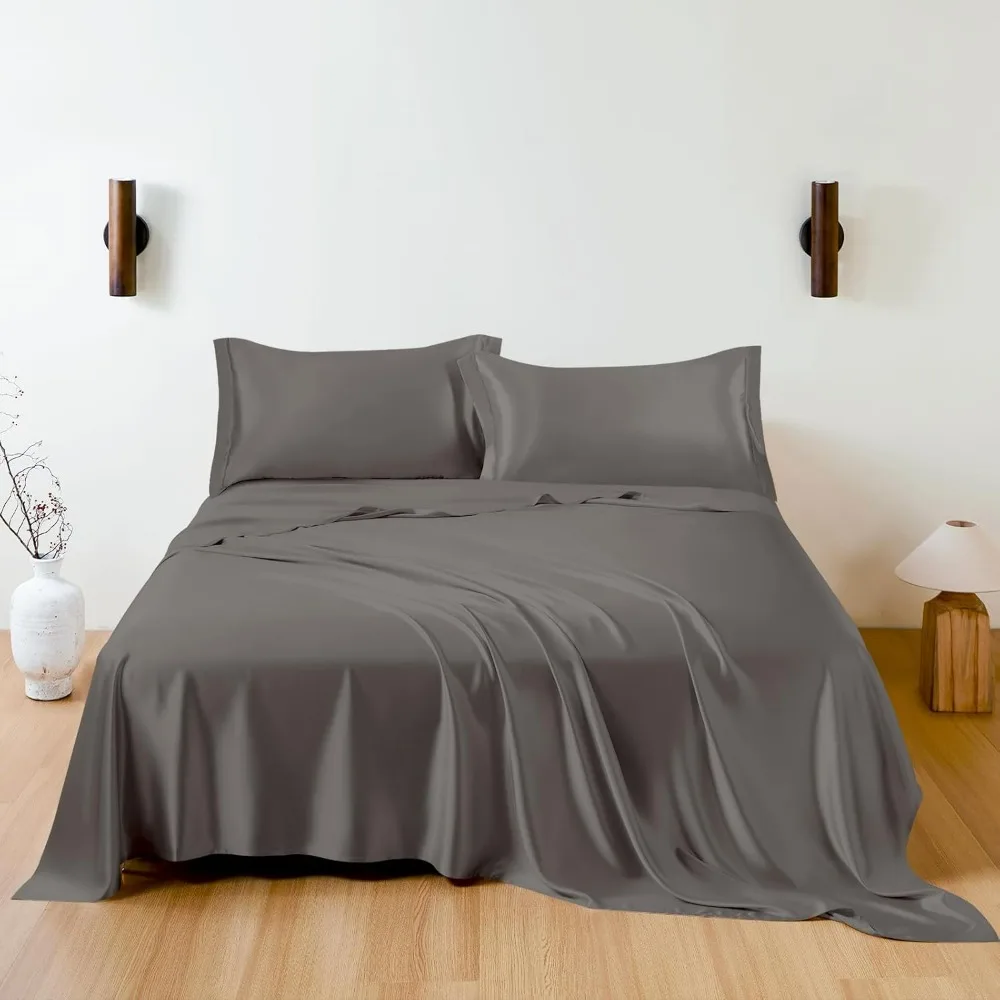
These colors display exceptional qualities on silk bedding:
- Jewel tones: Emerald, sapphire, amethyst, and ruby gain remarkable depth and dimension on silk’s reflective surface
- Metallics: Silver, gold, copper, and bronze shimmer naturally on silk without appearing artificial
- Neutrals: Ivory, champagne, platinum, and taupe develop sophisticated nuance as light plays across silk’s surface
- Pastels: Blush pink, pale blue, mint green, and lavender gain ethereal quality with silk’s natural glow
The way silk interacts with light makes color appear to illuminate from within rather than simply covering the surface. This effect varies throughout the day as natural light changes, creating an ever-shifting color experience.
Room lighting significantly impacts how silk colors appear—warm lighting enhances red and golden undertones while cool lighting brings out blues and purples. Test silk samples in your actual bedroom lighting before making final selections.
For exceptional color longevity, mulberry silk sheets resist fading better than many other fabrics, maintaining their color brilliance even after multiple washes when properly cared for.
Answers to Common Bedding Color Questions
Can I use dark colors in a small bedroom?
Yes, but strategically. Use darker colors on the bed itself while keeping surrounding elements lighter. Dark bedding can create a cozy focal point without making the room feel smaller, especially when balanced with lighter walls and adequate lighting.
How do I match bedding to wall colors?
You have several options: choose bedding in a similar color family but different shade than your walls for subtle harmony; select complementary colors for more visual interest; or use neutral bedding with walls in any color. For versatility, neutral walls allow for changing bedding colors seasonally.
What colors hide stains best?
Medium tones like taupe, sage green, or denim blue mask minor stains better than very light or very dark colors. Pattern and texture also help conceal small marks. However, high-quality bedding like silk is naturally more stain-resistant and easier to maintain than lower-quality materials.
How often should I change my bedding colors?
Base bedding (sheets, duvet covers) in quality materials can last many years, so choose colors you’ll enjoy long-term. Update seasonally with less expensive accessories like throw pillows and blankets. Many people have a warm-weather and cool-weather bedding set to rotate between seasons.
Do expensive bedding materials show colors differently?
Absolutely. Premium natural fibers like silk display remarkable color depth and dimension compared to synthetic materials. Pink silk sheets appear more vibrant and luminous than the same color on polyester sheets due to silk’s natural structure and how it refracts light.
Creating beautiful bedding color combinations balances art and science. Whether you prefer calming neutrals, bold statements, or nature-inspired schemes, the principles in this guide help you create a bedroom that’s both visually stunning and conducive to restful sleep. Remember that quality materials like those from Sanctuary Soft enhance any color choice, creating a truly luxurious sleep sanctuary that delights all your senses.

